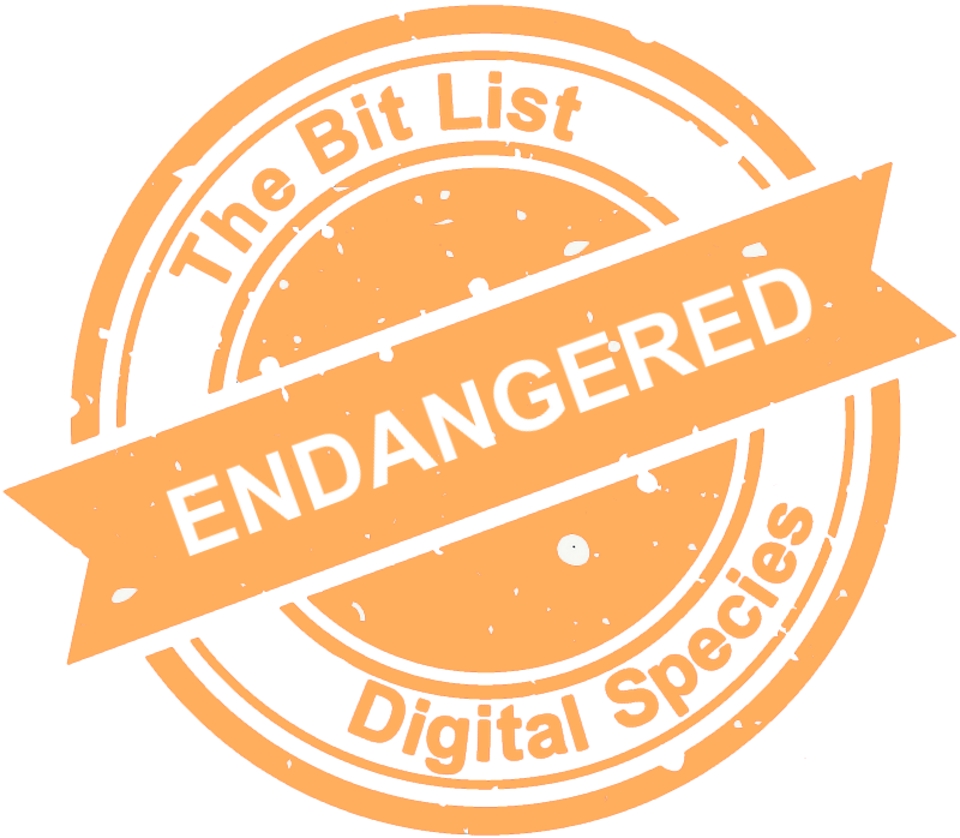Oral Histories
|
|
 |
|
|
Oral histories including both audio and audiovisual (video and sound), and their accompanying transcripts and/or time-pointed summaries. |
||
|
Digital Species: Museum and Gallery, Community Archives, Sound and Vision |
New Rescoped Entry |
Consensus Decision |
|
Imminence of Action Action is recommended within five years, detailed assessment within three years. |
Significance of Loss The loss of tools, data or services within this group would impact on many people and sectors. |
Effort to Preserve | Inevitability It would require a small effort to preserve materials in this group, requiring the application of proven tools and techniques. |
|
Examples Examples are wide ranging but can generally include born-digital or digitized material produced as an output of oral history projects; video or oral histories; transcripts, summaries, and other accompanying materials. |
||
|
‘Critically Endangered’ in the Presence of Aggravating Conditions Poor documentation; external dependencies; storage on old or degrading media; storage on consumer portable media; lack of preservation planning; lack of sustained funding; lack of ongoing investment in changing preservation requirements; lack of capability; poor documentation; dependence on small staff or volunteer resources; lack of standardized file naming. |
||
|
‘Vulnerable’ in the Presence of Good Practice Preservation capability; high quality storage; meticulous and consistent replication; stored in a trusted repository; preservation requirement understood; intellectual property managed to enable preservation; good descriptive cataloguing; persistent identifiers. |
||
|
2023 Review This entry was added in 2019 under ‘Digital Materials in Museums and Galleries’ and previously rescoped in 2021 to ‘Supporting Digital Materials for Museums and Galleries’. The 2023 Bit List Council superseded the entry, splitting it into six more discrete entries as the scope of the single entry was too broad to provide the guidance needed. The recommendation to break this entry down was also made by the 2021 Jury, as the types of digital collections content in museums can be vast and offer particular risks in museum and gallery contexts. Approaches to preservation are dependent on whether these oral history recordings are on analogue and digital portable media (e.g. external hard disk drives, audio or video tapes), or are in a somewhat managed networked environment. If held on portable media, guidance for portable media should be followed. |
||
|
Additional Comments The 2023 Council agrees with the 2021 Jury Review recommendations that Museum & Gallery entries require further rescoping. In regards to this entry, the 2023 Council recommends that a future review should further rescope of Oral Histories and Research Materials and Outputs due to overlaps/cross referencing which, due to time constraints, was unable to be done for the 2023 review cycle. There may be a need for clarifying what falls under oral histories in the context of preservation at the organization - whether it includes audio and/or video recordings recorded for the purposes of creating oral history recordings (to be added to an organization’s collection), or for internal-only use. In addition, there may be some misidentification of oral history recordings, where the intent may have been to capture the recording as a research interview or as vox pops. See also:
|
||






























































































































